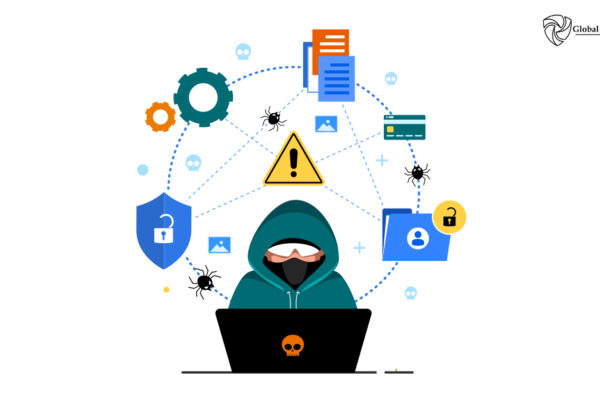
Introduction
In today’s digital landscape, ensuring the safety of an organization’s network and systems is of utmost importance. Welcome to the world of ‘External Penetration Testing’, a pivotal component of modern cybersecurity strategies. Essentially, external penetration testing, or ‘pen testing’ for short, mimics cyberattacks on an organization’s publicly accessible assets, such as their web platforms, applications, and network systems. Why? The objective is to pinpoint vulnerabilities before they catch the eye of ill-intentioned hackers. Performed by skilled ethical hackers, these evaluations provide a critical view of an organization’s defensive measures, highlighting areas of concern and suggesting ways to bolster them. In this blog, we’ll delve into the nuances of external penetration testing, discussing its significance, approaches, and the critical role it plays in defending safeguarding digital assets.
What is External Penetration?
When we talk about safeguarding a company’s digital perimeters, the external penetration test emerges as a crucial evaluation technique. An External Penetration Test is a structured assessment where specialists simulate cyberattacks on a company’s publicly accessible digital resources to identify and address security vulnerabilities. This process involves systematically probing and assessing the external touchpoints of an entity like its public IP addresses and systems accessible from the internet to unearth any potential entry points for unauthorized users. These tests aren’t just about finding weak spots, though. They also gauge the severity of each vulnerability and evaluate the potential damage they might cause if exploited. By mimicking the strategies of real-world cybercriminals, these tests can reveal the practical risks faced by an organization. However, unlike actual cyberattacks, every step is executed with the utmost care to ensure no disruption or harm.
Aspects of External Penetration Testing:
- Objective and Scope: Before initiating the test, it’s essential to define what you’re aiming to achieve and the boundaries of the testing. This could range from targeting specific web applications to entire network infrastructures.
- Ethical Considerations: These tests are executed by ethical hackers who follow a code of conduct, ensuring no harm to the system and maintaining the confidentiality of any data they encounter.
- Techniques and Tools: Depending on the scope, a variety of tools, both automated and manual, might be employed. This can include vulnerability scanners, exploit kits, and custom scripts.
- Vulnerability Assessment: This involves identifying weak points in the system. Vulnerabilities could range from software bugs, misconfigurations, or even outdated software.
- Exploitation: After identifying vulnerabilities, the next step is to try and exploit them to see if they can be used as a potential entry point or to gain further access.
- Reporting: Post-testing, a detailed report is generated. This report highlights the vulnerabilities found, the potential risks they pose, and recommendations to rectify them.
- Remediation and Follow-up: After presenting the findings, it’s not just about fixing the vulnerabilities. Often, a retest is conducted to ensure that the remediation steps were effective.
- Continuous Monitoring: The digital landscape is ever-evolving, and new vulnerabilities emerge regularly. Continuous monitoring ensures that systems remain secure and any new threats are promptly identified.
- Legal and Compliance: It’s imperative to ensure that all testing activities are within legal bounds and comply with any relevant industry regulations.
- Stakeholder Communication: Keeping all relevant parties informed, from IT teams to senior management, ensures that everyone understands the potential risks and the importance of remediation.
Why do companies conduct External Penetration Testing?
Companies conduct external penetration testing to proactively discover weaknesses in their digital systems before cyber adversaries can exploit them. Such testing not only helps in complying with industry-specific security regulations but also in effectively managing risks.
By understanding and addressing these vulnerabilities, organizations can validate their existing security protocols, reassuring stakeholders of their commitment to cybersecurity. The financial implications of potential cyber incidents further emphasize the importance of these tests. Additionally, these simulations offer valuable insights into real-world attack scenarios, aiding in both technical defenses and broader employee awareness. In essence, external penetration testing is a critical preventive measure in today’s digital age.
Process of External Penetration Testing:
- Planning and Preparation:
Define the scope of the test: Which systems, networks, or applications will be included?
Obtain legal permissions and contracts to ensure the test is authorized.
- Information Gathering:
Collect publicly available data about the target to understand its digital footprint.
Identify IP addresses, domain names, network infrastructure, and more.
- Threat Modeling:
Based on the gathered information, determine potential entry points.
Identify possible threats and prioritize them based on factors like feasibility and potential impact.
- Vulnerability Analysis:
Use automated tools and manual techniques to identify vulnerabilities in the in-scope systems.
Analyze findings to determine which vulnerabilities are real and exploitable.
- Exploitation:
Actively exploit identified vulnerabilities to gauge their real-world impact.
This step provides a clear picture of what an actual attacker could accomplish.
- Post-Exploitation:
Determine the extent of the compromise: Can the attacker pivot to other systems? What data can they access or manipulate?
This stage emphasizes understanding the potential damage and lateral movement within the compromised network.
- Reporting:
Compile a detailed report of the findings.
The report typically includes a summary, vulnerabilities discovered, data accessed, recommended remediation steps, and overall risk assessment.
- Remediation and Retesting:
Assist the organization in addressing and patching the identified vulnerabilities.
Optionally, conduct a retest to ensure vulnerabilities are properly mitigated.
Benefits of External Penetration Testing:
Proactive Security: External penetration testing helps organizations identify and fix vulnerabilities before attackers can exploit them, bolstering defenses against potential cyber threats.
Regulatory Compliance: Many industries mandate regular security assessments. Conducting external penetration tests ensures companies meet these regulatory requirements, avoiding potential fines or sanctions.
Stakeholder Confidence: Demonstrating a commitment to cybersecurity through routine testing can boost trust among clients, partners, and shareholders, reinforcing the organization’s reputation for data protection.
Cost Savings: By identifying and mitigating vulnerabilities early, companies can avoid the potentially significant financial repercussions of security breaches, such as ransom payments, legal fees, and reputational damage.
Enhanced Security Posture: Beyond the identification of vulnerabilities, penetration tests offer insights into improving security strategies, leading to a more comprehensive and robust cybersecurity framework for the organization
External Penetration Testing vs Internal Penetration Testing:
| Criteria | External Penetration Test | Internal Penetration Test |
| Orientation | Externally facing assets | Internal networks & systems |
| Main Objective | Detect vulnerabilities that external actors can exploit. | Assess vulnerabilities from within the organization’s internal network. |
| Threat Perspective | Simulate threats from outside actors such as hackers or cybercriminals. | Simulate insider threats or attackers with initial access. |
| Targeted Systems | Web servers, DNS servers, VPN gateways, email servers. | Workstations, internal servers, databases, internal applications. |
| Typical Techniques | Port scanning, vulnerability scanning on public IPs, spear phishing. | Network sniffing, password cracking, privilege escalation and lateral movement. |
| Benefit | Prevent unauthorized entries from the internet, ensure robust perimeter defenses. | Strengthen internal defenses and limit potential damage once an attacker is inside. |
Conclusion:
In conclusion, external penetration tests are an indispensable component of a comprehensive cybersecurity strategy. By simulating real-world attacks on externally facing assets, organizations gain invaluable insights into their security posture from an outsider’s perspective. This proactive approach not only identifies vulnerabilities before malicious actors can exploit them, but it also helps in fortifying defenses, ensuring regulatory compliance, and building stakeholder confidence. As cyber threats continue to evolve in complexity and frequency, regular external penetration testing remains a critical measure to safeguard an organization’s digital assets and reputation.



